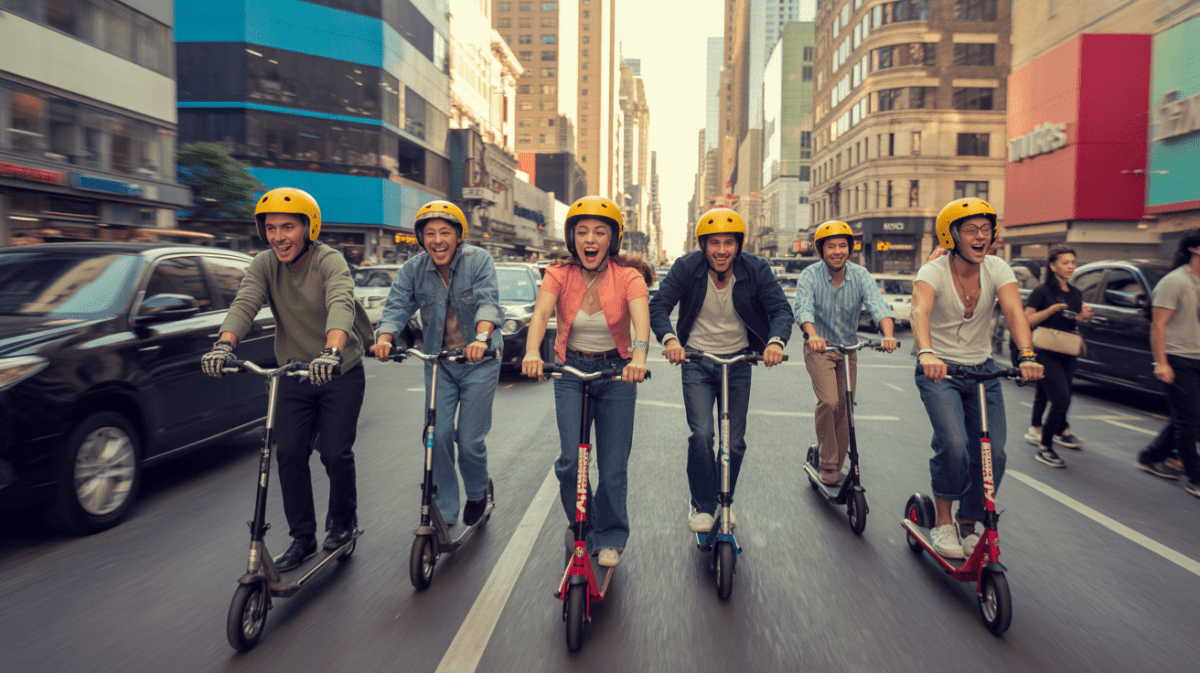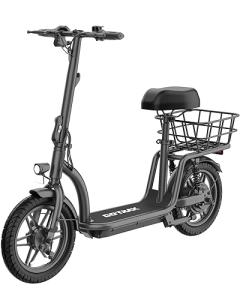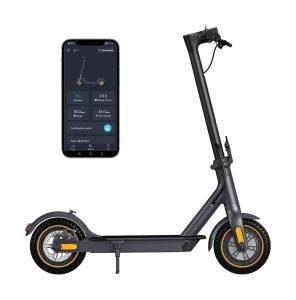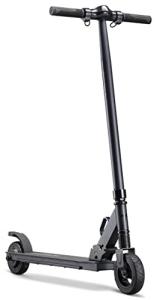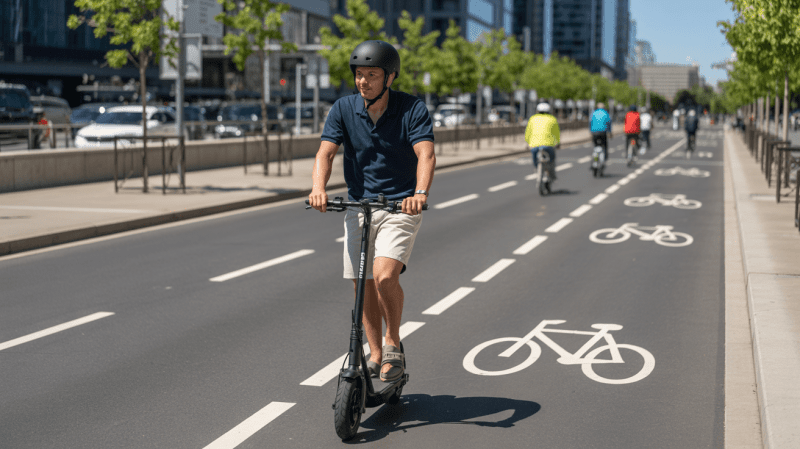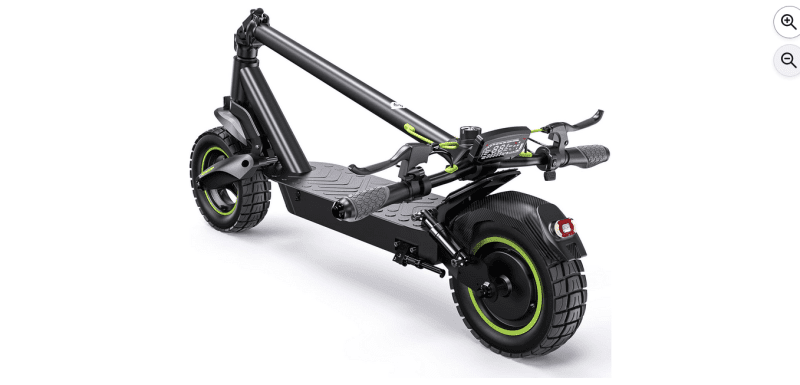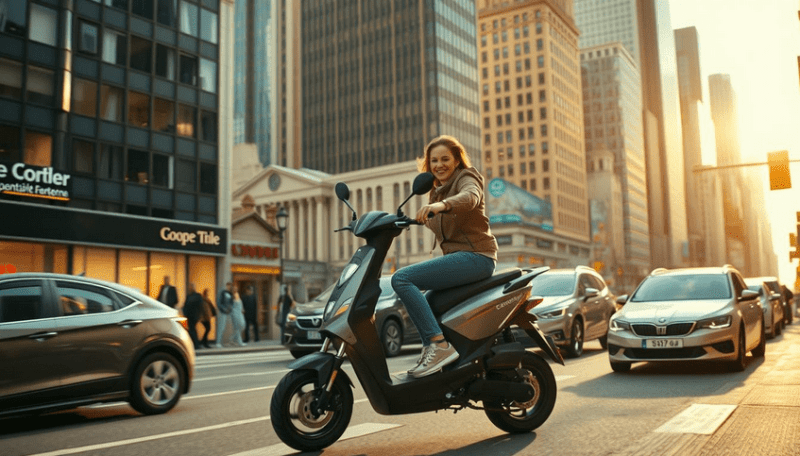Discover the top spots to enjoy your stand-up scooter adventures:
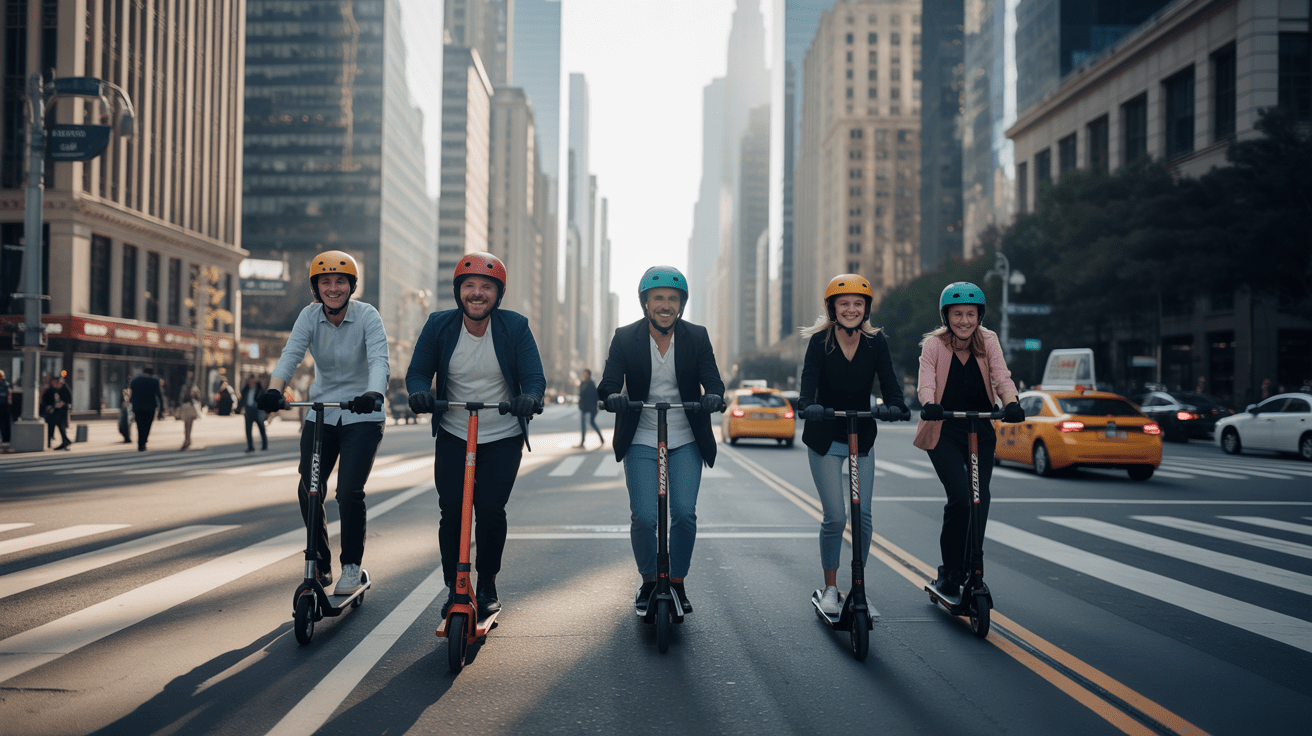
We can see why electric scooters are reshaping short trips across the United States.
They cost less than cars, require minimal maintenance, and simplify errands and commutes. Rentals let us try a scooter with no big buy-in, and many cities add lanes and calm corridors so riders feel safer.
Beyond convenience, scooters offer health perks: they engage balance and core muscles while getting us outside. They also help cities cut emissions and noise, supporting local sustainability goals.
In this guide we preview top urban spots—from Portland and Austin to New York City and San Jose—that pair transit links with scenic networks. Our picks weigh infrastructure, safety culture, year-round practicality, and planning that boosts overall mobility.
Key Takeaways
- Electric scooters make short trips cheaper and cleaner than many cars.
- Shared programs lower barriers so more riders can try micromobility.
- Protected lanes and multi-use paths improve safety and access.
- Scooters add health benefits by engaging balance and core strength.
- We measured infrastructure, policy, transit links, and year-round use when choosing the best cities.
Why stand-up scooters are thriving in American cities today
We see scooters popping up on streets and paths as a quick, low-cost answer to short urban trips. The mix of low operating costs, easy rentals, and expanding infrastructure makes this mode attractive to many residents and commuters.
Eco-friendly mobility, affordability, and the fun factor
Electric scooter propulsion cuts emissions and noise compared with short car trips. That helps cities reclaim space for people and supports sustainability goals.
Rentals and shared fleets let us try riding without a big purchase. This reduces barriers and makes scooter options practical for errands, transit links, and short commutes.
Health perks: balance, core engagement, and more
Riding engages balance and core muscles, turning quick trips into light, low-impact activity. The outdoor element also boosts mood, so scooters feel playful as well as purposeful.
"Scooters add a flexible, low-cost layer of mobility that fits many trip types."
- Protected lanes and multi-use paths make riding safer and smoother.
- Calmer streets and clearer signage lower the learning curve for new riders.
- Scooters pair well with transit, giving riders shortcuts that ease traffic in dense corridors.
How we chose the best cities for scooter riders
We focused on cities that give riders clear space, good transit links, and reliable rental options. Our method balances on-the-ground infrastructure with rules and real-world access.
Infrastructure that makes trips predictable
We prioritized connected lanes, multi-use paths, and traffic-calmed streets that allow scooters to operate without sudden conflicts with cars. Cities with park paths and continuous lane networks scored higher.
Portland earned points as an early adopter with designated lanes and park paths that link neighborhoods to destinations.
Transit integration and rental access
We examined the connection between scooters and public transportation, as well as whether shared fleets serve key hubs. Reliable transit links turn a short ride into a practical transport mode.
San Jose’s EMAP and its interest in BART partnerships showed strategic planning. Seattle’s allowance of multiple fleets—Bird, Link, Lime, Spin, Wheels—signals wide access.
Safety culture, regulations, and year-round rideability
Clear rules, predictable enforcement, and a safety-minded street culture raised scores. New York City’s legalization in late 2020 created consistent expectations for riders and operators.
We also weighed weather adaptations. Denver’s winter-ready fleets earned credit for keeping access when snow arrives.
"We measured infrastructure, policy, transit links, and year-round practicality to find places that make short trips simpler and safer."
- Connected lanes and calm streets for predictable operation.
- Transit-friendly systems that bridge first-and-last-mile gaps.
- Multiple rental providers and broad service areas to reduce friction.
- Establish clear local rules and a strong safety culture to protect riders and pedestrians.
- Weather adaptations and neighborhood reach for everyday trips.
Best U.S. Cities for Riding Stand-Up Scooters
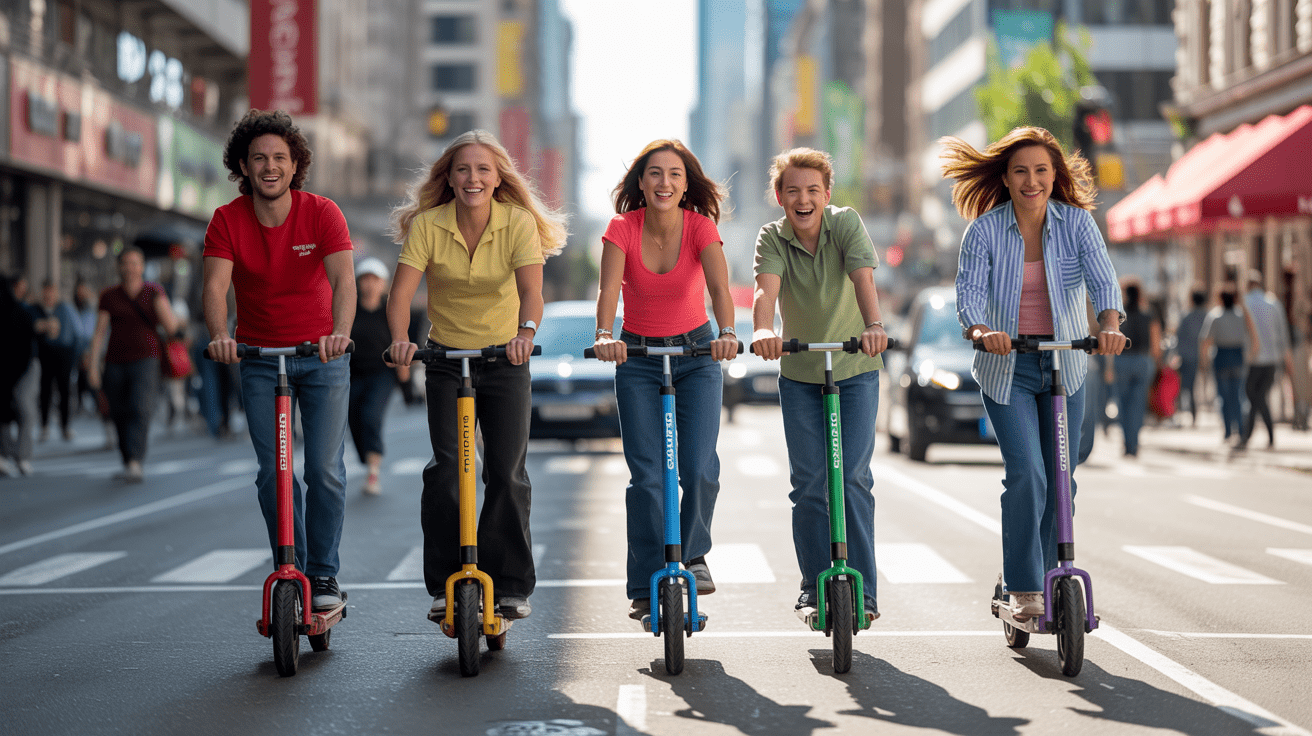
Where we ride matters: a tight lane network, reliable rentals, and good transit links turn short trips into smooth, everyday options. Below, we summarize why these metropolitan spots make scooter travel practical and fun.
Portland, Oregon
Early adoption and a widespread set of designated lanes and multi-use park paths keep us separated from fast traffic. That layout makes it easy to ride between parks and neighborhoods.
Austin, Texas
Diverse rental options plus dedicated PEV lanes help commuters and visitors get around without a car. Transit links add reach for longer trips.
Denver, Colorado
Winter-adapted fleets and integrated micro-mobility features mean we can keep riding when temperatures dip. The city mixes docks and shared options across the metropolis.
San Francisco, California
Compact blocks and landmark routes make short hops ideal for shared electric scooters. Sightseeing and quick transfers between neighborhoods work well here.
Atlanta, Georgia
Improving lanes and pilot programs show a culture of innovation. Connectivity is rising, and that expands useful access for local riders.
San Jose, California
Alignment with the EMAP and moves toward BART partnerships aim to place fleets at stations. Students and commuters already use scooters to bridge campus and transit.
Seattle, Washington
Multiple fleets and strong street etiquette make finding a device simple. Riders benefit from clear rules and respectful streets.
New York City, New York
Legalization opened space for Lime, Bird, and Veo to operate. Short scooter trips now supplement a dense transit system and offer fast shortcuts.
Santa Monica, California
Coastal lanes, wide walkways, and easy e-scooter rental access near transit link beach time with errands and dining without fuss.
Minneapolis, Minnesota
An expanding footprint and solid transit background let riders stitch together stops across neighborhoods and nearby suburbs.
"These cities pair lanes, rentals, and transit to make short trips simple and safe."
What makes these cities stand out for electric scooters
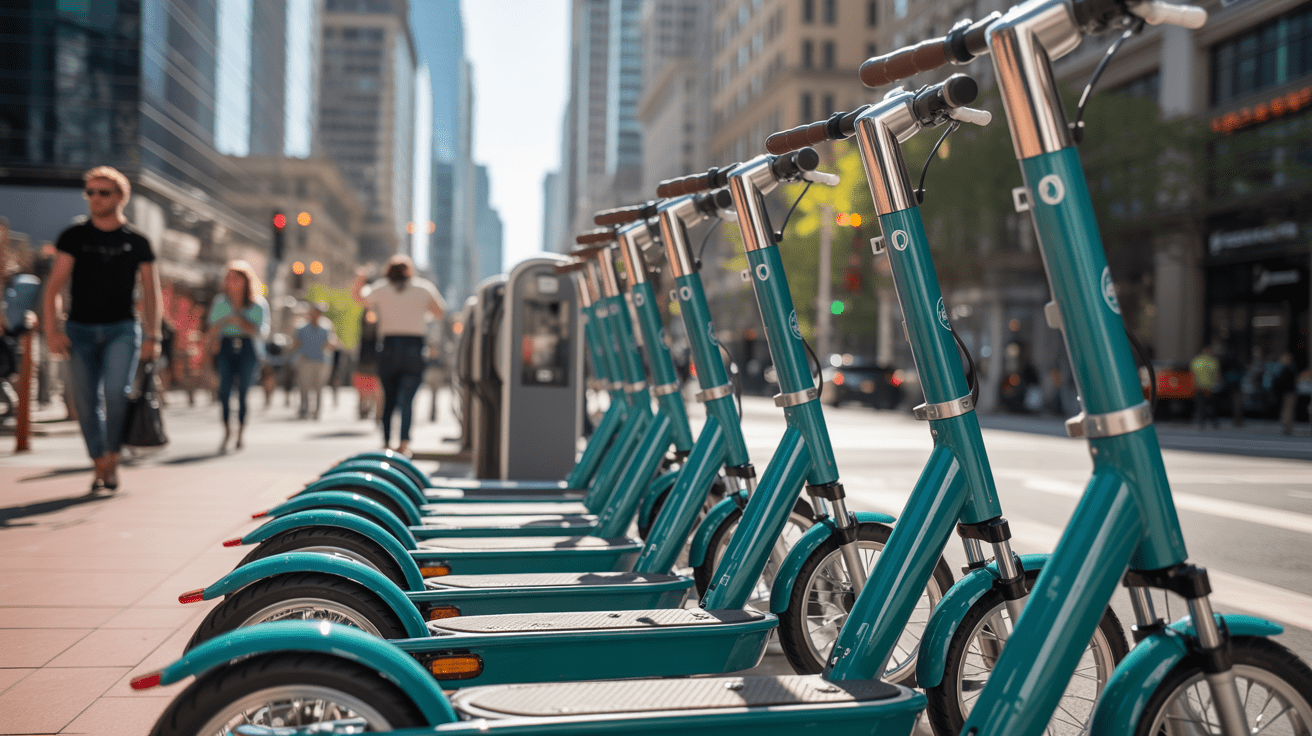
A clear rental network and continuous paths turn short trips into reliable daily choices.
Reliable e-scooter rental ecosystems for visitors and commuters
We look for multiple providers and steady fleet coverage. In Seattle, brands like Bird, Link, Lime, Spin, and Wheels increase availability and pricing options for riders.
Good e-scooter rental systems also support charging, rebalancing, and quick repairs so devices appear where commuters need them most.
Connected networks: bike lanes, multi-use trails, and neighborhood links
Portland’s designated lanes and park paths show how lane continuity makes single segments into full trips.
San Jose’s EMAP work and interest in partnering with BART unlock transit links and shorten transfers.
"When lanes, signage, and operations line up, residents gain safe, repeatable routes for errands and work trips."
| Feature | Seattle | San Jose | Portland |
|---|---|---|---|
| Shared brands | Bird, Link, Lime, Spin, Wheels | Growing pilots, EMAP coordination | Multiple local operators |
| Transit integration | Transit hubs, good coverage | BART partnership interest | Park path links to transit |
| Infrastructure | Downtown lanes, clear signage | Targeted tech for people/goods | Designated lanes and trails |
We find that dense demand centers—downtowns, campuses, and waterfronts—keep fleets nearby. This improves access and makes switching to electric scooters feel easy and dependable.
Safety and etiquette for riding in busy urban landscapes
A few simple rules make scooting through city traffic safer for everyone. We start with a safety-first mindset: scan, signal, and yield so other users can predict our moves.
Use designated lanes when they are available and keep right on multi-use paths. In Portland, marked lanes and slow downtown zones help riders match local limits and signage.
We recommend wearing helmets, using front and rear lights at dusk, and braking earlier than expected when visibility or traffic changes. Periodic checks of tires, brakes, and lights keep shared and personal devices reliable.
"Clear etiquette and small habits reduce surprises between riders, walkers, and cars."
- Respect posted speed limits and slow zones to smooth interactions with pedestrians and vehicles.
- Follow local rules on sidewalk use and parking; park neatly to avoid blocking access for residents.
- Make eye contact at intersections and driveways to lower conflict risk with drivers and delivery vans.
- Choose routes with lanes, low-traffic streets, or park connectors, especially while building confidence on a new route.
- Reduce speed in wet conditions, at night, and in crowded areas—extra stopping distance matters.
Seattle commuters tend to follow road rules, and that culture improves safety for non-motorized users. New York City’s legalization clarified where electric scooters and e-scooters can operate, so we pay attention to local nuances before each ride.
Planning your ride: routes, transit options, and local rules
When we pair a scooter with transit, short gaps become smooth, time-saving legs. Planning ahead helps us avoid surprises and choose the best way to reach a destination.
Mix-and-match mobility: pairing scooters with public transportation
Map protected corridors and low-stress connectors first so we can get around confidently without defaulting to cars. Use transit maps and bike-scooter routing in apps to link curb-to-platform trips.
Quick checklist: confirm local rules, preview elevation and traffic hot spots, and identify how to chain a scooter with public transportation for longer hops.
- Time scooter legs to transit departures for smooth transfers.
- Compare rental plans and passes before a busy day to match budget and access.
- Pack essentials: charger, helmet, compact lock, and a backup route if a link is closed.
"San Jose is aligning e-scooters with EMAP and exploring BART partnerships to place devices at rail stations for faster station access."
New York City legalized e-scooters in late 2020; Lime, Bird, and Veo now improve last-mile access in dense corridors. Austin’s PEV lanes complement the transit system and help stitch clean transfers across a wide metropolis.
For cold-weather rides, follow Denver’s lead: dress for conditions, pick plowed routes, and allow extra time when surfaces are slick. Bookmark local ordinances and seasonal advisories so we can adapt to construction, events, and weather.
| Planning step | Action | Benefit |
|---|---|---|
| Route mapping | Pick protected lanes and low-traffic connectors | Safer, predictable trips |
| Transit timing | Sync scooter arrival with departures | Smoother transfers, less wait time |
| Rental choice | Compare passes and per-ride pricing | Lower daily cost and better access |
| Season prep | Choose plowed streets and extra time in winter | Year-round reliability |
Conclusion
From early adopters like Portland to winter-ready Denver and transit-integrated San Jose, many metro areas are folding electric scooters into daily trips.
We celebrate how these best cities show the many ways a scooter fits modern life. Connected lanes, clear rules, and a safety-minded culture help scooter riders and commuters choose this agile mode alongside transit and walking.
In the United States, momentum is real: more local leaders and providers pilot links and tune systems to make ideal conditions for safe, flexible mobility. Residents gain cleaner air and quieter streets when short car trips become scooter or e-scooter legs.
Try a destination from our list, plan your way with transit timing, and pick low-stress routes. Share your favorite corridors so the community learns where the network shines next.
Next step: grab a rental, check local rules, and enjoy the ride — together we can keep practical, pleasant mobility rolling.
FAQ
What cities have the strongest infrastructure for electric scooter riders?
We look for places with protected bike lanes, multi-use trails, and traffic-calmed streets. Cities like Portland, Minneapolis, and San Francisco score well because they pair continuous lanes with clear signage and connections to parks and commercial districts. That network makes short trips safer and more convenient.
Are shared e-scooter rentals available in most metro areas?
Yes — many metros now host multiple rental operators such as Lime, Bird, and VeoRide. San Jose, Austin, and Seattle offer broad rental access that complements buses and light rail, so visitors and commuters can hop on scooters for last-mile trips.
How do local rules affect where we can ride?
Local ordinances set speed limits, sidewalk restrictions, helmet laws, and parking zones. New York City and San Francisco, for example, have city-specific rules for dockless devices. We always recommend checking municipal websites or operator apps before riding to avoid fines.
Which cities handle winter or rainy conditions best for scooters?
Denver and Seattle adapt fleets seasonally with sturdier models and maintenance routines. Cities with year-round commitment to micromobility keep salted paths, clear bike lanes, and shelters at transit connections, improving rideability in colder months.
Are scooters allowed on public transit like buses and trains?
Policies vary. Some systems welcome folded micro-mobility devices on board, while others allow them only off-peak or on specific routes. San Jose’s focus on EMAP and BART-friendly planning shows how transit integration can smooth transfers; always check the transit agency’s rules first.
How can we stay safe riding in heavy urban traffic?
Wear a helmet, use lights and reflective gear, obey traffic signals, and ride in designated lanes when possible. Practice predictable lane changes and yield to pedestrians. Many cities also promote safety campaigns and offer maps of low-traffic routes.
Do scooters have a practical role in daily commuting?
Absolutely. Scooters excel for short commutes and last-mile connections to transit hubs. Cities with good rental ecosystems and secure parking options—like Austin and Minneapolis—make it easy to combine scooters with buses and trains for reliable daily travel.
What should visitors know about parking and leaving a scooter?
Most cities require parking on sidewalks without blocking pedestrian paths, at bike racks, or in designated corrals. Operators’ apps usually show approved parking zones. Improperly parked devices can be fined or rebalanced by the provider.
How do cities manage safety culture and rider education?
Many municipalities partner with operators on outreach: free helmets, safety workshops, and signage. Portland and Seattle emphasize etiquette and share-the-path rules, helping new riders learn local norms quickly.
Can we expect more cities to expand scooter-friendly infrastructure?
Yes. Demand for eco-friendly, affordable mobility is driving investments in lanes, parking zones, and transit integration. Pilot programs in Atlanta and ongoing planning in cities across the country indicate continued growth in micromobility networks.
DISCLAIMER
This document is provided for general information purposes only and should not be relied upon as providing legal advice, technical, or specific operational guidance to the reader, whether as to the practices described in the document or the applicable legal requirements and regulations.JUSTSCOOTERS.COM expressly disclaims any responsibility for liability arising from or related to the use or misuse of any information in this document.
